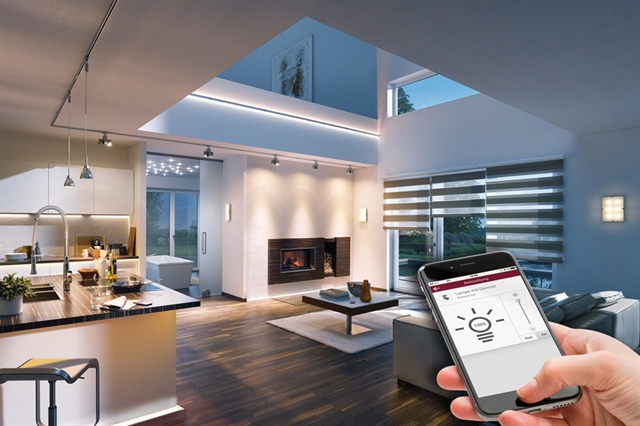As technology advances at an unprecedented pace, the concept of the “smart home” has become a reality for many homeowners. Once a futuristic dream, the ability to control various aspects of your home remotely or with voice commands has now entered the mainstream. Whether you’re interested in enhancing convenience, improving energy efficiency, or increasing home security, smart devices provide endless possibilities for home improvement. However, integrating smart devices into your home can seem overwhelming, especially for beginners. In this article, we’ll walk you through the essential steps for mastering smart devices in your home—helping you create a seamless, intuitive, and connected living environment.
1. Understanding the Core of a Smart Home
A smart home is a home equipped with devices that connect to the internet, allowing them to be controlled remotely through a smartphone, tablet, or voice assistant. These devices are typically integrated into a home automation system, enabling you to manage lighting, heating, security, entertainment, and even appliances with ease.
To begin mastering your smart home, it’s crucial to understand the foundation of a smart home ecosystem. At its core, a smart home revolves around devices that can communicate with one another through a central hub or platform. Common smart home platforms include Amazon Alexa, Google Assistant, and Apple HomeKit, each offering its own unique set of compatible devices.
2. Planning Your Smart Home Ecosystem
Before you start purchasing smart devices, it’s essential to create a plan that aligns with your goals and needs. Ask yourself the following questions:
-
What do I want to achieve? Are you looking to automate simple tasks, enhance security, or make your home more energy-efficient? Your goals will guide the devices you choose.
-
What is my budget? Smart devices come in a range of prices, and while some devices are affordable, others can be quite expensive. Setting a budget will help you prioritize the most important devices for your home.
-
How will devices communicate? Choose a platform (such as Amazon Alexa, Google Assistant, or Apple HomeKit) that suits your preferences and is compatible with the devices you plan to purchase.
Once you have clear goals in mind, the next step is to identify which smart devices are necessary for achieving those goals.
3. Starting with Key Smart Devices
When it comes to building a smart home, there are several foundational devices that can improve your home’s functionality and provide an entry point into the world of home automation. Let’s explore some of the most popular and useful smart devices to start with:
A. Smart Lighting
Smart lighting is one of the most popular and cost-effective ways to start your journey into home automation. With smart bulbs, you can control the brightness, color, and even set schedules for when lights should turn on and off. This provides energy efficiency, convenience, and flexibility.
Smart bulbs, such as those from Philips Hue or LIFX, allow you to adjust the lighting remotely via a smartphone app or voice command through your smart assistant. Additionally, they can be integrated into your home’s automation system, allowing you to sync the lighting with other smart devices.
B. Smart Thermostats
Smart thermostats are essential for anyone looking to improve energy efficiency and save on utility bills. Devices like the Nest Learning Thermostat or the Ecobee SmartThermostat allow you to control your home’s temperature from anywhere using a smartphone. They can also learn your habits over time and adjust the temperature automatically, ensuring your home is always comfortable without wasting energy.
C. Smart Security Cameras
Security is a top priority for most homeowners, and smart security cameras provide an easy way to keep an eye on your property. Brands like Ring, Arlo, and Nest offer high-definition cameras that can be installed both indoors and outdoors. These cameras offer features like motion detection, real-time alerts, and video streaming, all of which can be controlled remotely.
In addition, smart doorbell cameras allow you to see who is at your door, even when you’re not at home. With a simple voice command or smartphone app, you can interact with visitors or monitor deliveries in real time.
D. Smart Plugs and Appliances
Smart plugs are an excellent entry point for those looking to automate everyday devices like lamps, fans, or coffee makers. By plugging a device into a smart plug, you can control it remotely using your voice or smartphone, or schedule it to turn on and off at specific times. Popular smart plug brands include TP-Link Kasa and Wemo.
For those interested in upgrading more significant appliances, consider smart appliances like refrigerators, ovens, and washing machines that offer remote control and energy monitoring capabilities. These devices not only make your home more convenient but also help you stay on top of maintenance needs by providing useful notifications.
4. Integrating Your Devices into a Unified System
Once you’ve chosen your key devices, the next step is integrating them into a cohesive, unified system. The easiest way to do this is by selecting a voice assistant platform—Amazon Alexa, Google Assistant, or Apple HomeKit—and connecting your devices to it.
A. Setting Up Your Smart Hub
To begin, you’ll need to install the relevant app for your chosen platform (e.g., the Amazon Alexa app, Google Home app, or Apple Home app). Each app allows you to connect your smart devices and manage them in one central location. Some devices may require a hub (like the Amazon Echo or Google Nest Hub), while others can be directly connected via Wi-Fi.
Follow the instructions provided by each device manufacturer to connect your devices to the app. Once connected, you can start controlling your devices via voice commands or through the app interface.
B. Creating Automations and Routines
One of the most powerful aspects of a smart home is the ability to automate tasks. With your devices connected, you can create routines and automations that make daily life more convenient. For example, you could set up a morning routine where your smart thermostat adjusts to the desired temperature, your smart lights turn on gradually, and your coffee maker begins brewing—all with a single command.
Most platforms offer easy-to-use options to create automations based on time, location, or even specific triggers. For example, you could set your lights to turn off automatically when you leave the house or have your security cameras begin recording when motion is detected.
C. Voice Control Integration
Voice control is an integral part of any smart home. To get the most out of your voice assistant, familiarize yourself with the voice commands associated with your devices. For example:
-
“Alexa, turn on the kitchen lights.”
-
“Hey Google, set the thermostat to 70 degrees.”
-
“Siri, lock the front door.”
As you continue to integrate more smart devices, you’ll be able to combine multiple tasks into a single voice command. The more you use your voice assistant, the more intuitive your experience will become.
5. Maintaining and Expanding Your Smart Home
As you become more comfortable with your smart devices, you may want to expand your smart home ecosystem by adding more advanced devices or upgrading existing ones. Keep in mind that technology evolves rapidly, so it’s important to stay informed about new innovations in home automation.
Regularly maintaining your devices—such as updating firmware and ensuring that everything is connected to your Wi-Fi network—will help keep your smart home running smoothly. Additionally, consider integrating new technologies like smart home hubs or advanced security systems to further enhance your home’s capabilities.
Conclusion
Mastering smart devices in your home may seem like a daunting task at first, but by taking a step-by-step approach, it’s entirely achievable. Start with foundational devices like smart lighting, thermostats, and security cameras, and gradually expand your ecosystem as you become more comfortable. By planning your smart home ecosystem, integrating devices into a unified system, and utilizing voice control, you can transform your home into an efficient, automated, and modern living space. With the right tools and a little practice, you’ll soon be reaping the benefits of a truly smart home.

